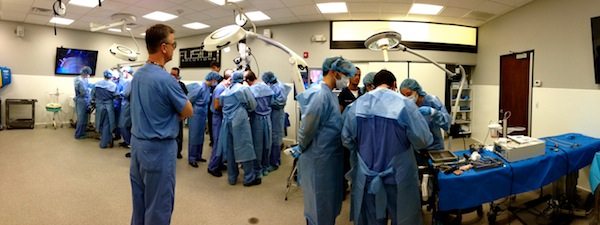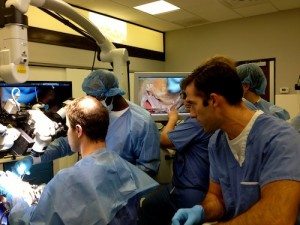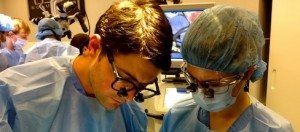We continued our residency cadaver lab series in late September, focusing on surgical approaches to an area of the brain known as the “skull base”. The skull base is a common location of brain tumors and aneurysms, but is also a region of the brain which houses many critically important nerves, arteries, and veins.
One of the key skills a neurosurgeon needs to develop during his or her training is a complete mastery of the anatomy of the skull base; this allows a surgeon to remove brain tumors and treat aneurysms definitively and safely, while protecting the healthy nerves and arteries that are often found very close by.
Skull base surgery is considered among the most technically challenging specialties in neurosurgery; fortunately, at Columbia we have excellent and experienced skull base surgeons such as Dr. Jeffrey Bruce, Dr. Michael B. Sisti, and Dr. Anthony D’Ambrosio, with whom we train in an apprenticeship model.
As residents, we benefit from having faculty who are invested in training the next generation of neurosurgeons. Dr. D’Ambrosio kindly donated his weekend to teach our residents critical surgical skills in a controlled learning environment using cadavers.
As per usual, we went through detailed didactic sessions, and then had the chance to spend hours refining our operative technique under the close guidance of Dr. D’Ambrosio. In this case, our excellent cadaver lab facility was also equipped with the latest 3D operative microscope technology, which enhanced our ability to visualize the complex spatial relationships which characterize the skull base.

Dr. Jonathan Yun practicing a craniotomy
During this lab we focused on approaches to the anterior and middle cranial fossa, and as part of our year long series of cadaver labs we will focus on approaches to the posterior cranial fossa in the spring. On behalf of all the residents, thanks to Dr. D’Ambrosio for leading this valuable training session! —Gaurav Gupta, MD, Neurosurgical Resident-Lab Year One
Gaurav Gupta, MD




